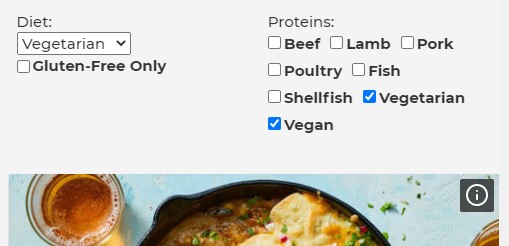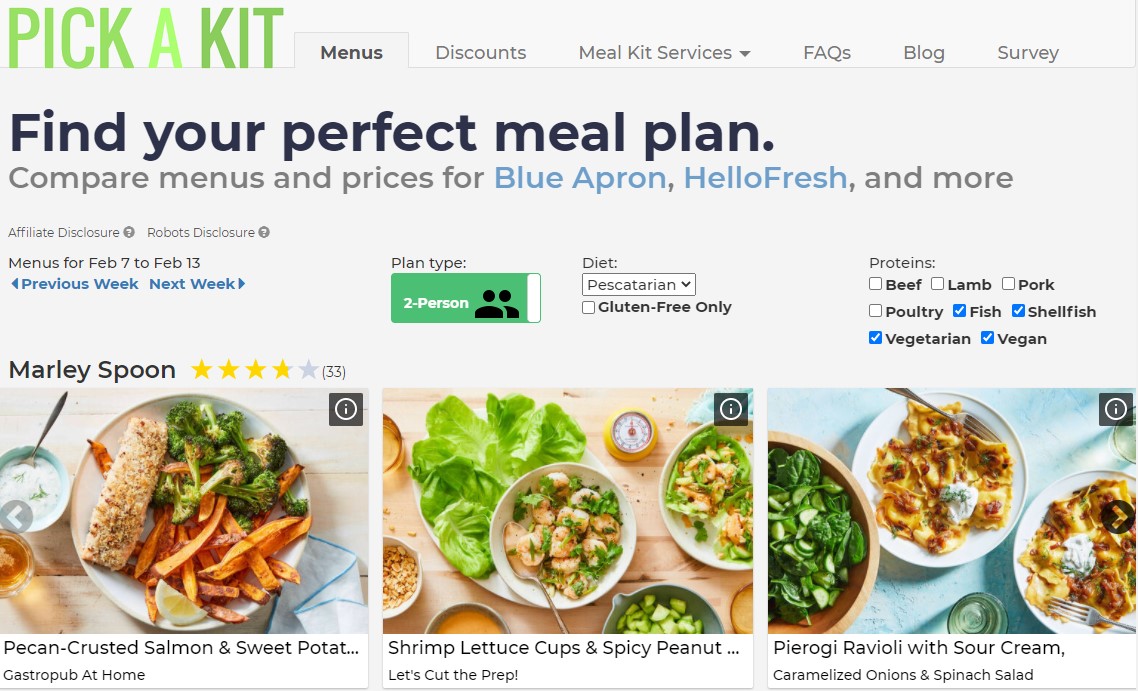Pick a Kit Protein Classifier
Methods: Random Forest, scikit-learn, React.js, Redux, NLP, Tokenization, NoSQL, MongoDB
Abstract
When comparing meal kits, users on Pick a Kit may have preferences for different proteins (e.g. beef, chicken, or vegetarian). We classify meals from various services based on the proteins they contain, and provide filters for users to easily view meals that fit with their diet.Problem
One of the main services provided at Pick a Kit is a list of menus from the most common services where a user can compare different meals. This data is mined from the different meal kit service websites; however the type of information available is not consistent across each website. This presented an opportunity: can we predict missing data (i.e. what protein types each meal contains)?Prototype
I decided to break it down to a simpler problem first: before classifying meals by different proteins (chicken beef pork etc.) I would start by predicting if the meals were vegetarian or not and treat the problem as binary classification. This version of the project used a Bernoulli Naive Bayes algorithm on the sci-kit learn package. Count Vectorization was used to generate tokens from the meal kit service titles subtitles and list of ingredients when available. A fringe benefit from this approach was that it helped us discover the entire problem could be structured as binary classification. Keep 1 variable for each protein type (e.g. hasBeef, hasPork, etc.).Algorithm Comparison
Could the model be expanded upon and improved? Of course! Working with another classmate at California State University Long Beach we looked at comparing different models including Naive Bayes Random Forest LDA after utilizing. While we found LDA and Naive Bayes models to have rapid performance a Random Forest model was deployed to production due to the infrequency of classification and its ability to work well without data normalization and minimal tuning.Production
After researching the performance of the different algorithms, the next step was to begin putting it into production. We implemented a filters component using Redux and React.js. Users can select the diet they follow, or check the different proteins they eat.

